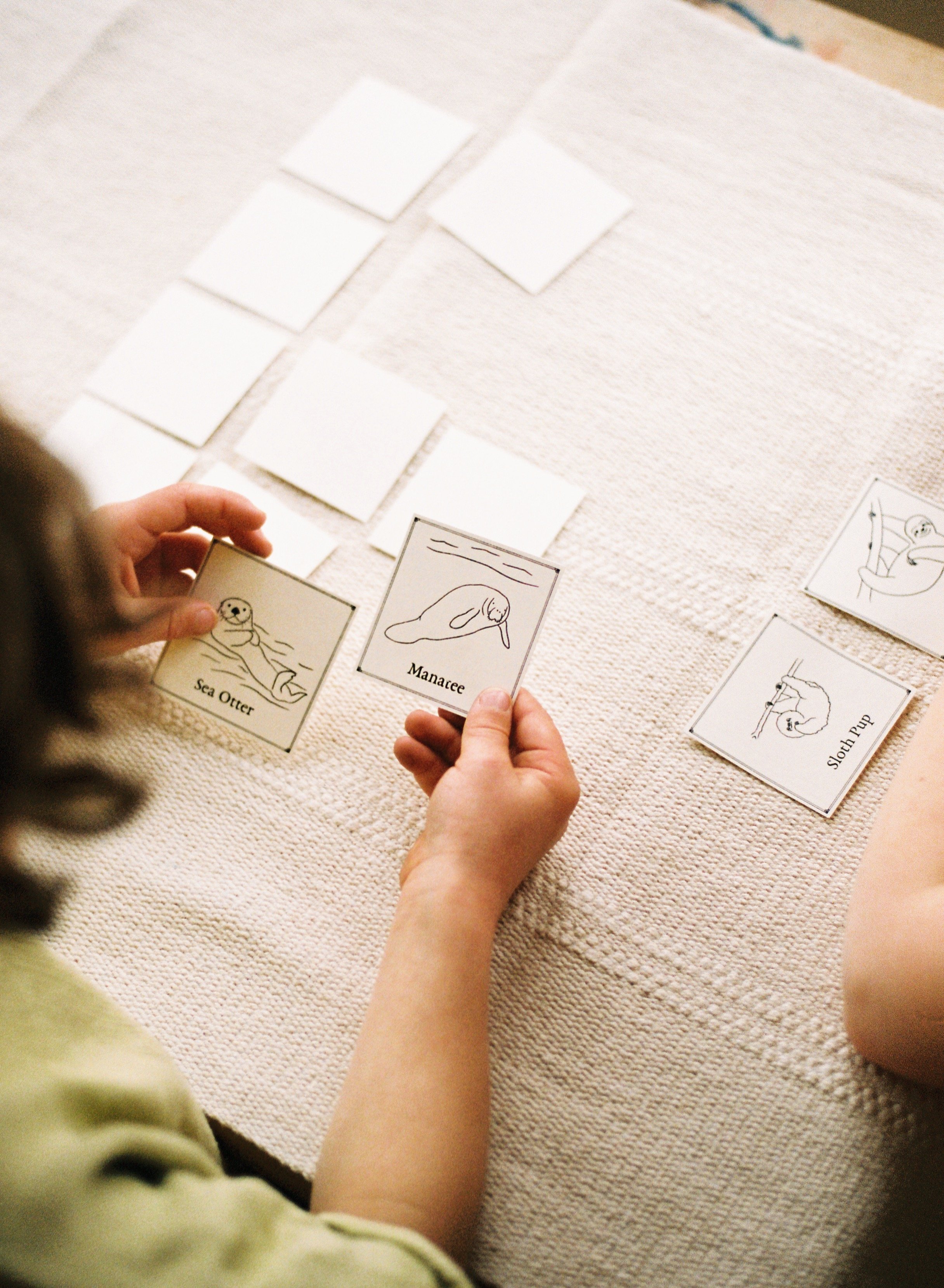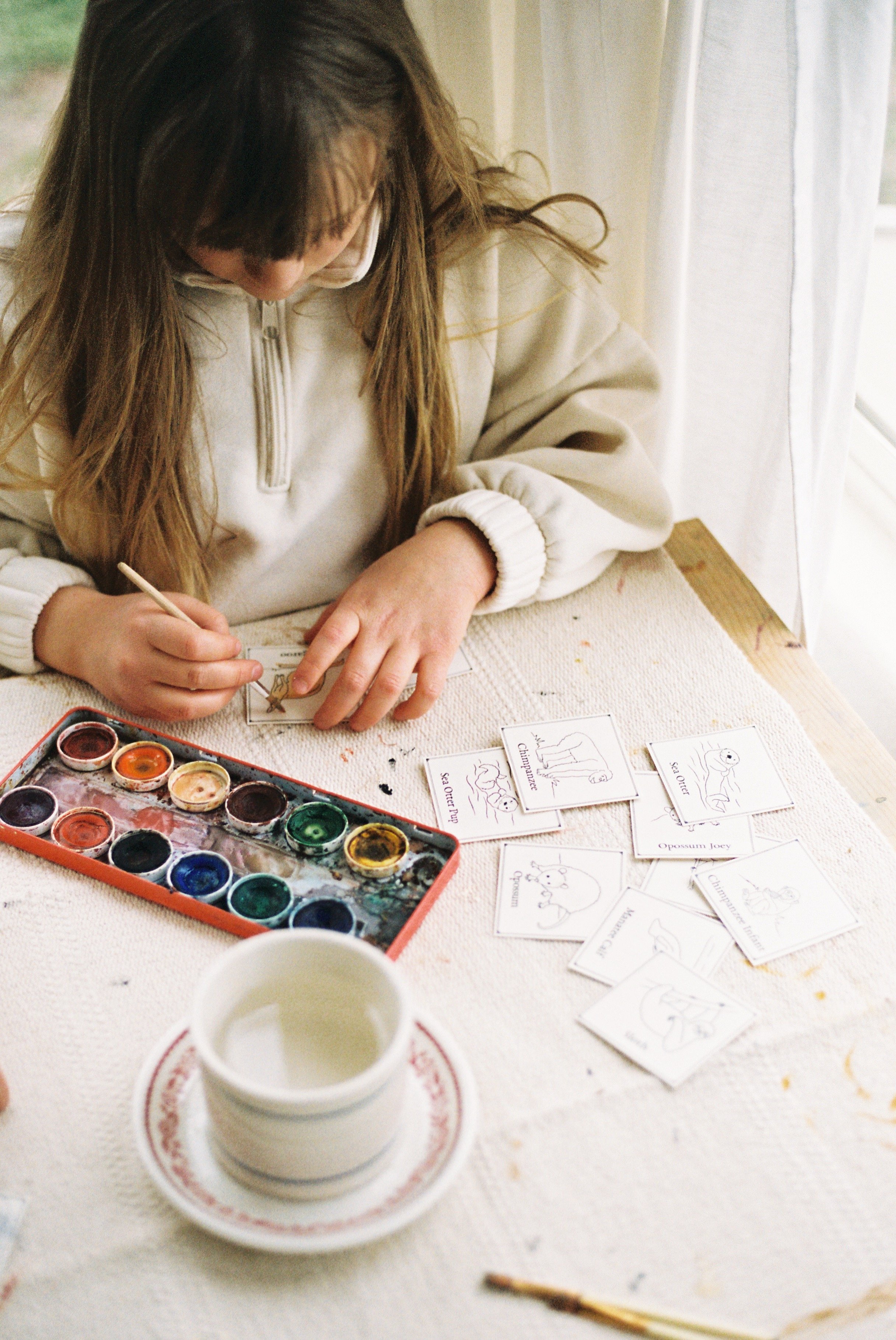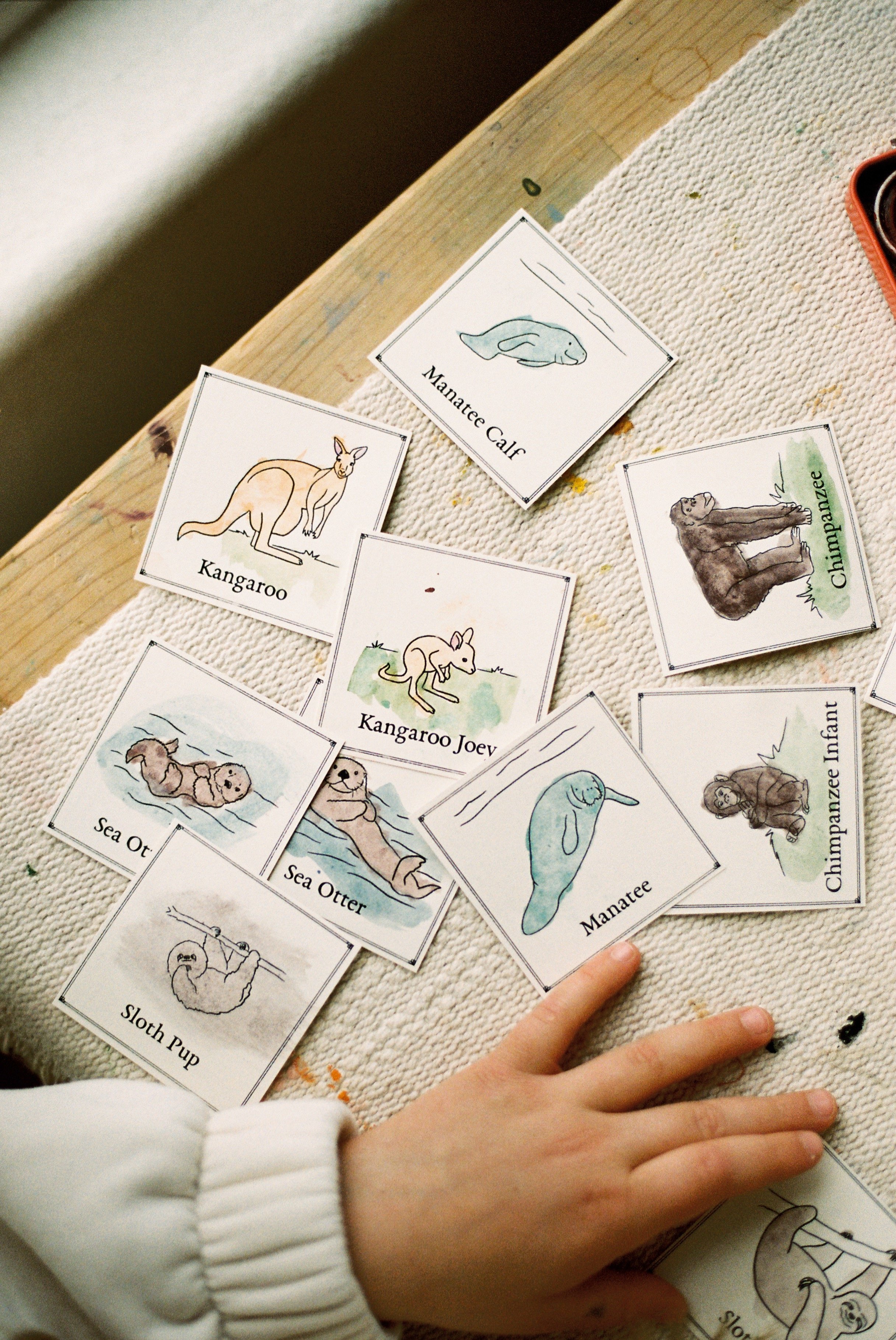
How Do Animals Carry Their Young?
LESSON 4
Children explore the different ways animals carry their young, then engage in an engineering activity and a game of memory to practice new knowledge.
The book “Baby on Board” by Marianne Berkes.
Crayons or paint to color cards. (optional)
A stuffed animal
Materials such as strings, ribbons, fabric, silks, belts, tape and scissors.
Materials
Gather materials.
Print and cut out animal matching game before lesson.
Preparations
Facilitate a discussion with students about their favorite play experiences.
Guide students through the story by prompting observations and predictions.
Provide guidance and support during engineering activity, encouraging creative problem-solving.
Facilitate the memory game activity, ensuring clear instructions and promoting cognitive development through gameplay.
Offer opportunities for extension activities or discussions based on student interests or questions.
Objectives for Teachers
Objectives for Children
Identify favorite ways to play with or pretend to be animals, encouraging self-reflection and expression.
Discuss how animals carry their young based on the story, promoting comprehension and critical thinking.
Engage in a hands-on engineering activity to design a solution for keeping a baby close, fostering problem-solving and creativity.
Play a memory game with animal matching cards to practice memory and matching skills, promoting cognitive development.

Collect and Connect
Create actions and practice saying the poem ‘Animal Movements’ together.
Animal Movements
Snakes slither,
And cat's creep.
Spiders spin,
And leopard's leap.
Turtles trudge,
And bunny's bounce.
Falcon's fly,
And panther's pounce.
Hummingbird's hover,
And fish flop.
Gulls glide,
And rabbit's hop.
-Leslie Tryon

Activity Flow
Begin this lesson by reflecting on the fun play experiences your child engaged in, in the last lesson. Here are some questions you might ask:
2. Find a cozy spot to settle down and enjoy the story "Baby on Board" by Marianne Berkes. Start by reading the title aloud and taking a moment to look at the cover illustration together. Ask your child to describe what they see on the cover, which shows an otter with her pup floating in the water, the mother holding her baby close. Then, explain that this story is all about how animals carry their young. We've learned that animals need to be able to move to survive. However, some babies can't move on their own yet, or they need their mothers' help to move if they can't move fast enough or don't yet have the skills.
3. Let's read the story together to discover all the incredible ways animals carry their young! As you read, it might be fun to hide the illustration and read the description first then see if your child can guess what animal it is before showing them. This will help keep them engaged and interested in the story.
4. After reading the story, initiate a discussion about how animals carry their young. You can ask questions about the story, or if you have a hard copy of the book, play the match game at the end. The back of the book also shares fun ideas on integrating language arts, math, engineering, and movement into this lesson.
5. Next, let's introduce a fun engineering activity that's also found in the back of the book. Here's the challenge: your child needs to figure out how to keep their baby (stuffed animal) close to their body wherever they go. Give them materials like string, ribbons, tape, belts, and scissors to design a solution. Once they're done, have them "wear" their baby and explain their design.
6. After the engineering activity, conclude the lesson by playing a fun memory game with the animal matching game printable you prepared earlier. You can also let your child color the pictures on the cards before starting the game if you’d like.
7. Here's how to play:
What has been your favorite way to play with, or as pretend animals?
What do you know about baby animals?
Turn all the cards face down on the table.
Take turns with your child flipping over two cards at a time.
If you find a baby animal and its mom, it's a match! You get to go again.
If not, it's the other player's turn.
Keep playing until all the baby animals have been matched to their moms.




